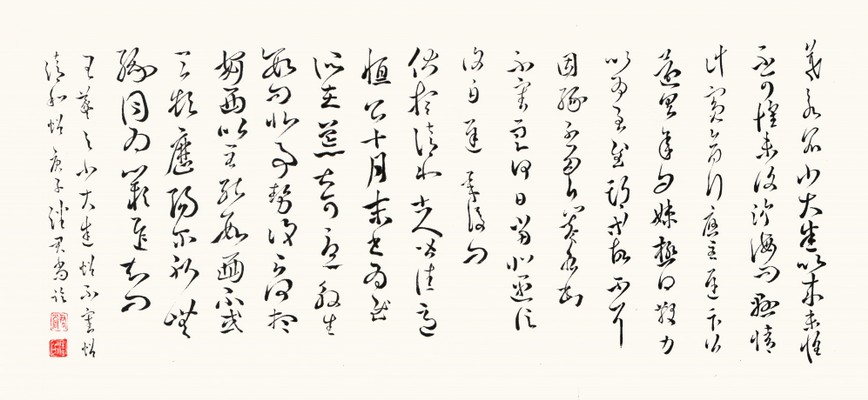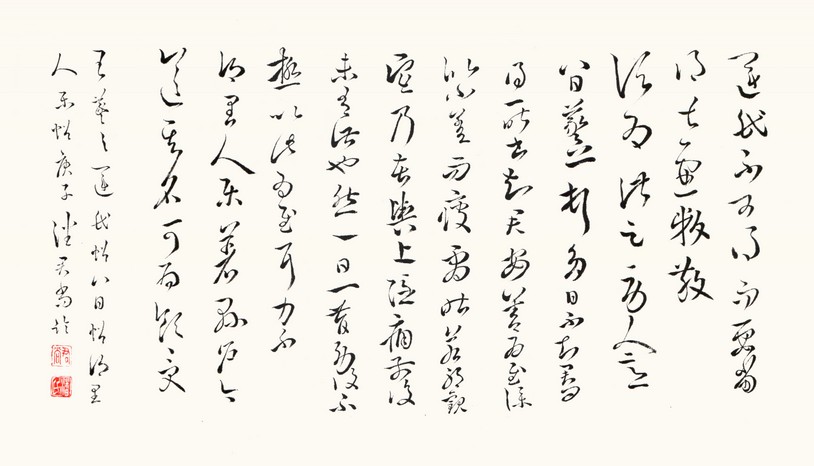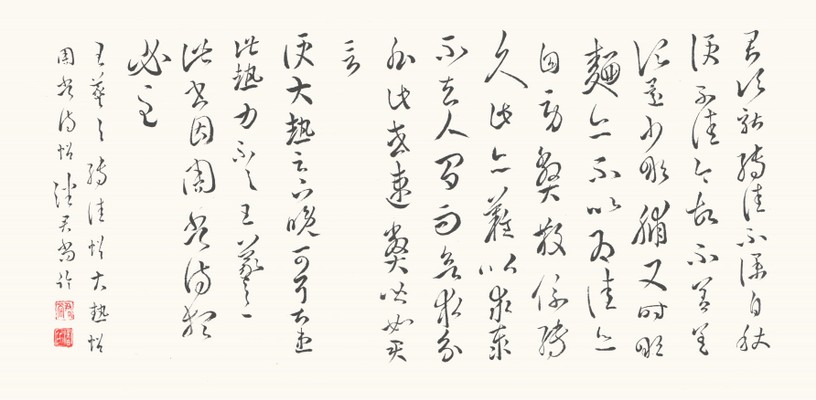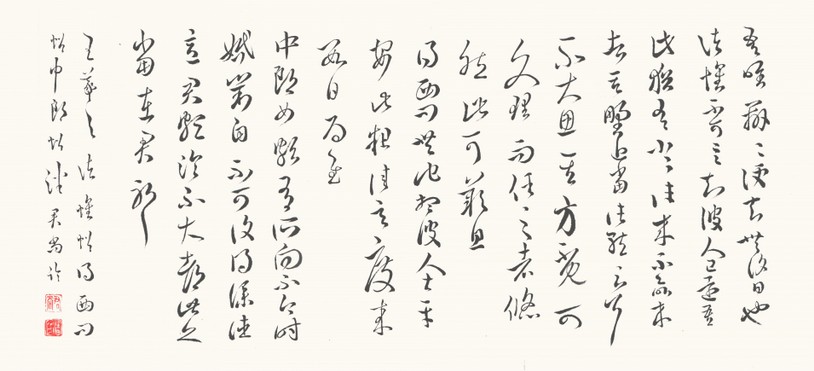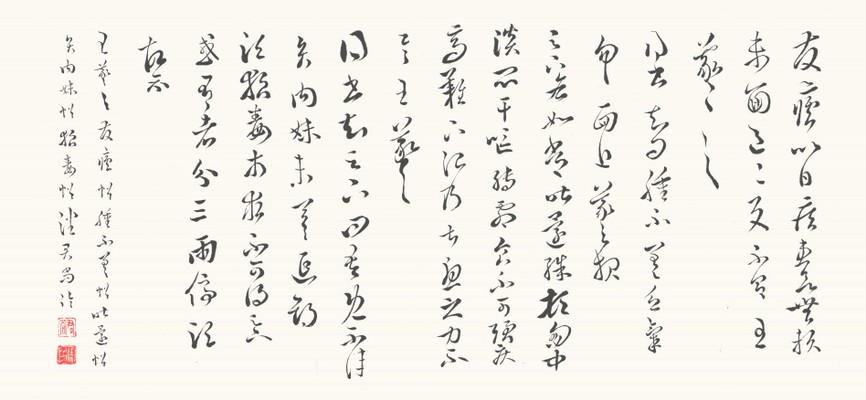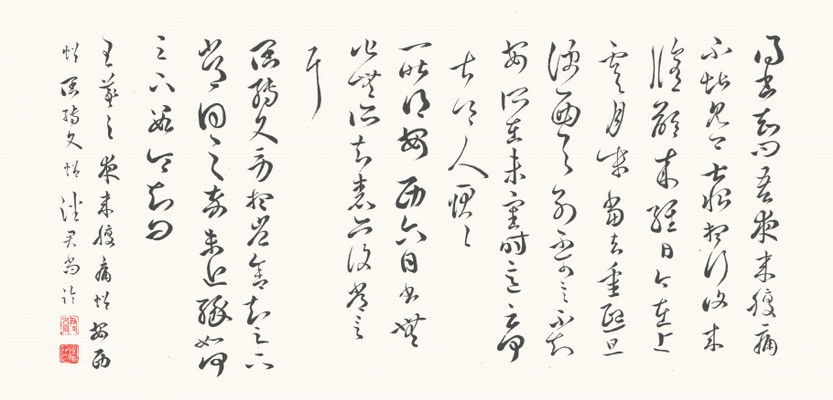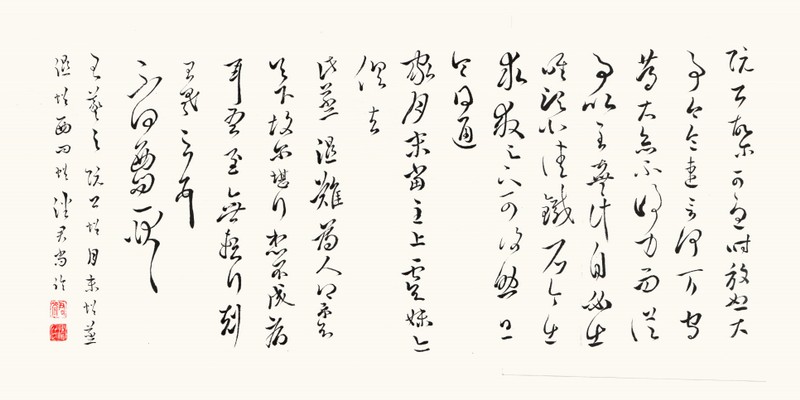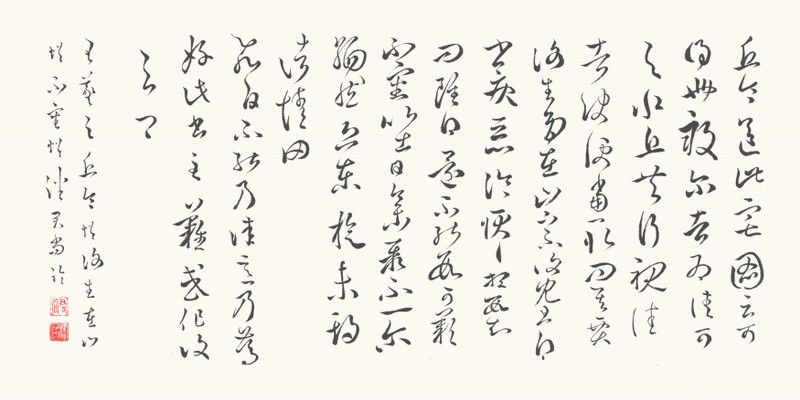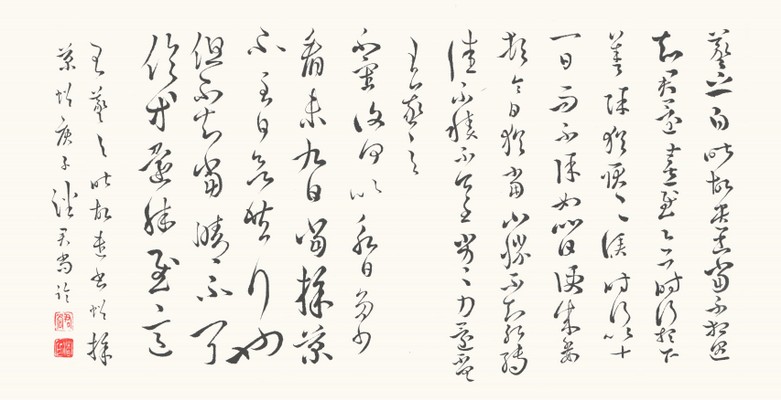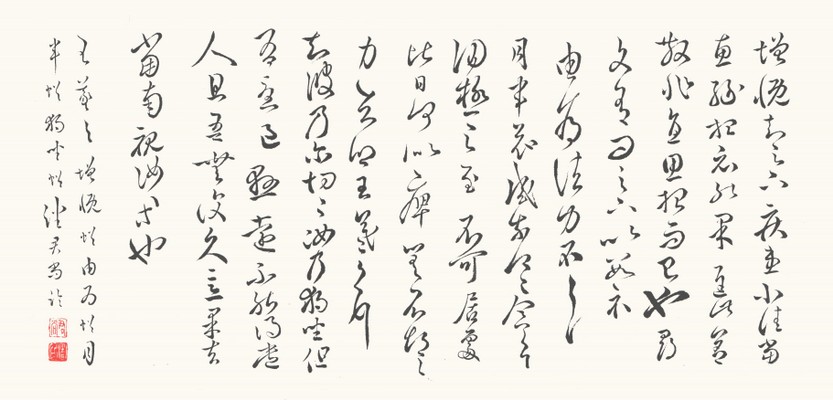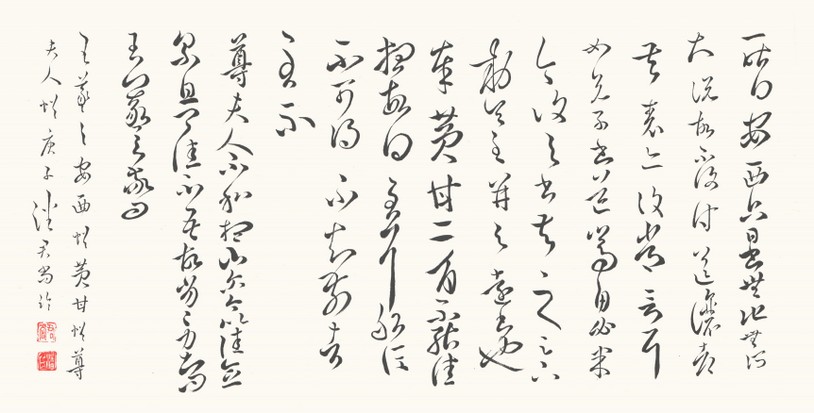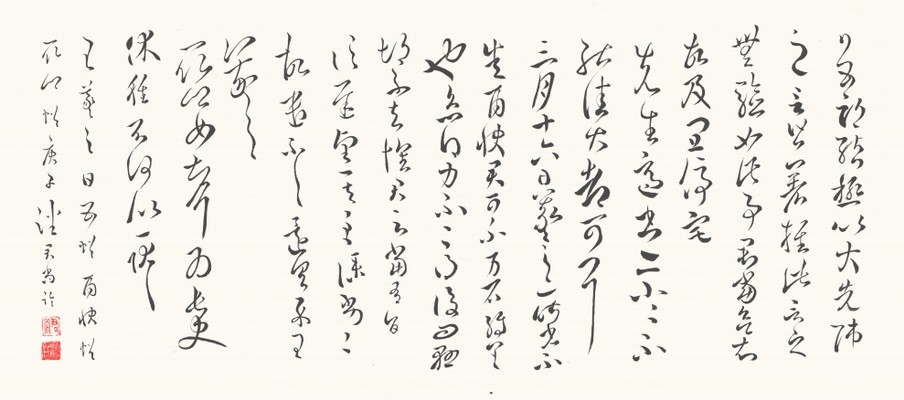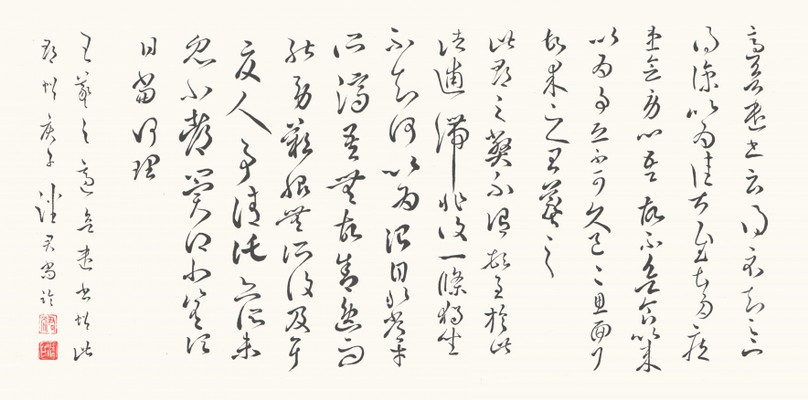Galleries and Translations > Models of Masterpieces > Models of miscellaneous Masterpieces by Wang Xizhi (part X) 臨王羲之諸法帖 (第十部份)
Models of miscellaneous Exemplary Masterpieces by Wang Xizhi (part X) 臨王羲之諸法帖 (第十部份)
Historical information
(I)
Wang Xizhi (王羲之) is often considered to be the most outstanding Chinese calligrapher of all time and is regarded as “The Sage of Calligraphy (書聖)” in China and Japan. Born in 303AD in an upper-class aristocratic family, Wang Xizhi started learning Chinese calligraphy at the age of seven from the renowned calligrapher Wei Shuo (衛鑠 or 衛夫人, 272-349AD). His father, Wang Kuang (王曠, ?-?AD), was a government prefecture chief (太守) and was also a calligrapher. His uncle, Wang Dao (王導, 276-339AD), was the prime minister (丞相) during the reign of Emperor Cheng of the Eastern Jin Dynasty (晉成帝, 321-342AD ). Further biographic information of Wang can be seen on my page regarding Lanting Xu (蘭亭帖).
(II)
The calligraphies presented below are my models of Wang Xizhi's handwriting found in Chunhua Imperial Archive of Calligraphy Exemplars (《淳化閣帖》). Supposedly, these handwritings were short letters and memos scribed by Wang. Although their authenticities are questionable, they are still often regarded as Exemplary Masterpieces (法帖) for calligraphers to study and observe. In the art of Chinese calligraphy, "帖(pronounced as Tie)" refers to an exemplary work that should be studied by all .
(III)
Since the originals in the Chunhua Imperial Archive of Calligraphy Exemplars (《淳化閣帖》) can be parts of or whole letters/memos scribed by Wang, translations that are provided below, if available, may not be entirely precise, for they can be interpreted out of context. Further, whether Wang had actually scribed them remains questionable. Accordingly, scholars should be wary of using these as authentic historical references.
A model of Xiao Dai Xi Tie (小大悉帖), Bu Shen Tie (不審帖), and Qing He Tie (清和帖)
35 X 76 cm
Click to Enlarge. Reserved, not available in shop.
Xiao Dai Xi Tie (小大悉帖):
Original Classical Chinese: 羲之死罪,小大悉以來未,惶不可懷。未復諮誨問,懸情。計賓命行應至,遲卞頌遠具承問,妹極得散力,以為至慰。期等故爾耳,因緣不多白,羲之死罪。
English: NA. The entire phrase may not be translated, for the context in which it was written is unknown or uncertain.
Bu Shen Tie (不審帖):
Original Classical Chinese: 不審,定何日當北?遇信復白。遲承後問。
English: NA. The entire phrase may not be translated, for the context in which it was written is unknown or uncertain.
Qing He Tie (清和帖):
Original Classical Chinese: 伏想清和,士人皆佳。適桓公十月末書,為慰。雲所在荒,甚可憂。殷生數問北事勢,復云何?想安西以至,能數面不?或雲頓歷陽,爾耶?無緣同為嘆。遲知問。
English: NA. The entire phrase may not be translated, for the context in which it was written is unknown or uncertain.
A model of Yun Min Tie (運民帖), Ba Ri Tie (八日帖), and Xiang Li Ren Le Tie (鄉里人樂帖)
35 X 71 cm
Click to Enlarge. Reserved, not available in shop.
Yun Min Tie (運民帖):
Original Classical Chinese: 運民不可得而要當得,甚慮叛散。頃為此,足勞人意。
English: NA. The entire phrase may not be translated, for the context in which it was written is unknown or uncertain.
Ba Ri Tie (八日帖):
Original Classical Chinese: 八日羲之頓首,多日不知君問,得一昨書,知君安善,為慰。僕似小差而疲劇,昨若耶觀望,乃苦輿上隱痛,前後未有此也。然一日一昔,勞復不極,以此為慰耳。力不一一。
English: NA. The entire phrase may not be translated, for the context in which it was written is unknown or uncertain.
Xiang Li Ren Le Tie (鄉里人樂帖):
Original Classical Chinese: 鄉里人樂著縣戶,今送其名,可為領受。
English: NA. The entire phrase may not be interpreted for the context in which it was written is unknown or uncertain.
A model of Zhi Yuan Tie (知遠帖), Xun Hao Tie (荀侯帖), and Zhi Jun Tie (知君帖)
35 X 71 cm
Click to Enlarge. Reserved, not available in shop.
Zhuang Jia Tie (轉佳帖):
Original Classical Chinese: 君頃就轉佳不?僕自秋便不佳,今故不善差。頃還,少噉脯,又時噉麵,亦不以為佳。亦自勞弊,散係轉久,此亦難以求泰。不去人間,而欲求分外,此或速弊,皆如君言。
English: NA. The entire phrase may not be translated, for the context in which it was written is unknown or uncertain.
Da Re Tie (大熱帖):
Original Classical Chinese: 便大熱,足下晚可耳。甚患此熱,力不具。王羲之上。
English: It has become so hot. Are you fairly well these days? I suffer very much from this heat. Despite all my efforts, they are not sufficient to overcome it. Wang Xizhi reports.
(Translated by Antje Richter & Charles Chace in The Trouble with Wang Xizhi: Illness and Healing in a Fourth-Century Chinese Correspondence (T’oung Pao 103-1-3 (2017) 33-93), revised by KS Vincent Poon).
Zhou Chang Shi Tie (周常侍帖):
Original Classical Chinese: 此書因周常侍,想必至。
English: NA. The entire phrase may not be translated, for the context in which it was written is unknown or uncertain.
A model of Zhu Huai Tie (諸懷帖), De Xi Wen Tie (得西問帖), and Zhong Lang Tie (中郎帖)
35 X 76 cm
Click to Enlarge. Reserved, not available in shop.
Zhu Huai Tie (諸懷帖):
Original Classical Chinese: 吾惟辨,辨便知,無復日也。諸懷不可言,知彼人已還。吾此猶有小小往來,不欲來者其野,近當往就之耳。不大思其方,不見可久理,而任之者悠然,此可嘆息。
English: NA. The entire phrase may not be interpreted, for the context in which it was written is unknown or uncertain.
De Xi Wen Tie (得西問帖):
Original Classical Chinese: 得西問,無他,想彼人甚平安。此粗佳,玄度來數日,為慰。
English: NA. The entire phrase may not be interpreted for the context in which it was written is unknown or uncertain.
Zhong Lang Tie (中郎帖):
Original Classical Chinese: 中郎女頗有所向不?今時婚對,自不可復得, 僕往意。君頗冷不?大都此亦當在君耶?
English: NA. The entire phrase may not be interpreted for the context in which it was written is unknown or uncertain.
A model of Fa Nue Tie (發瘧帖), Zhong Bu Cha Tie (腫不差帖), Zuo Hai Tie (昨還帖), Xian Nei Mei Tie (賢內妹帖), and Langdu Tie (狼毒帖)
35 X 76 cm
Click to Enlarge. Reserved, not available in shop.
Fa Nue Tie (發瘧帖):
Original Classical Chinese: 發瘧,比日疾患,欲無賴,未面邑邑。反不具,王羲之白。
English: NA. The entire phrase may not be translated, for the context in which it was written is unknown or uncertain.
Zhong Bu Cha Tie (腫不差帖):
Original Classical Chinese: 得書知問,腫不差,乏氣勿勿,面近,羲之報。
English: NA. The entire phrase may not be translated, for the context in which it was written is unknown or uncertain.
Zuo Hai Tie (昨還帖):
Original Classical Chinese: 足下各如常。昨還殊頓,胸中淡悶,干嘔轉劇,食不可強,疾高難下治,乃甚憂之。力不具。王羲之。
English: I hope everything is going well for you all. When I returned yesterday I was exceedingly tired. I felt a vague oppression in my chest and the dry heaves have intensified. I cannot bring myself to eat. Since the illness is so severe that it is difficult [to cure] by purging [i.e., inducing defecation], I am very worried about it. Despite all my efforts, they are not sufficient to overcome it. Wang Xizhi. (Translated by Antje Richter & Charles Chace in The Trouble with Wang Xizhi: Illness and Healing in a Fourth-Century Chinese Correspondence (T’oung Pao 103-1-3 (2017) 33-93), revised by KS Vincent Poon).
Xian Nei Mei Tie (賢內妹帖):
Original Classical Chinese: 得書,知足下問。吾既不佳,賢內妹未差,延期。
English: NA. The entire phrase may not be translated, for the context in which it was written is unknown or uncertain.
Langdu Tie (狼毒帖):
Original Classical Chinese: 須狼毒,市求不可得,足下或有者,分三兩,停須故示。
English: I need langdu. I tried to buy it, but it was not available. Should you have some, could you grant me three liang [ca. 40g]? I don’t have it anymore, but need it (?), that’s why I am writing to you. (Translated by Antje Richter & Charles Chace in The Trouble with Wang Xizhi: Illness and Healing in a Fourth-Century Chinese Correspondence (T’oung Pao 103-1-3 (2017) 33-93), revised by KS Vincent Poon).
A model of Ye Lai Fu Tong Tie (夜來腹痛帖), An Xi Tie (安西帖), and Kuo Zhuan Jiu Tie (闊轉久帖)
35 X 73 cm
Click to Enlarge. Reserved, not available in shop.
Ye Lai Fu Tong Tie (夜來腹痛帖):
Original Classical Chinese: 得書知問,吾夜來腹痛,不堪見卿,甚恨。想行復來,修齡來經日,今在上虞,月末當去。重熙旦便西,與別不可言,不知安所在。未審時意云何,甚令人耿耿。
English: NA. The entire phrase may not be translated, for the context in which it was written is unknown or uncertain.
An Xi Tie (安西帖):
Original Classical Chinese: 一昨得安西六日書,無他,無所知,表亦復常言耳。
English: NA. The entire phrase may not be translated, for the context in which it was written is unknown or uncertain.
Kuo Zhuan Jiu Tie (闊轉久帖):
Original Classical Chinese: 闊轉久,勞想豈舍,知足下常同之,卒未近緣如何?足下數令知問。
English: NA. The entire phrase may not be translated, for the context in which it was written is unknown or uncertain.
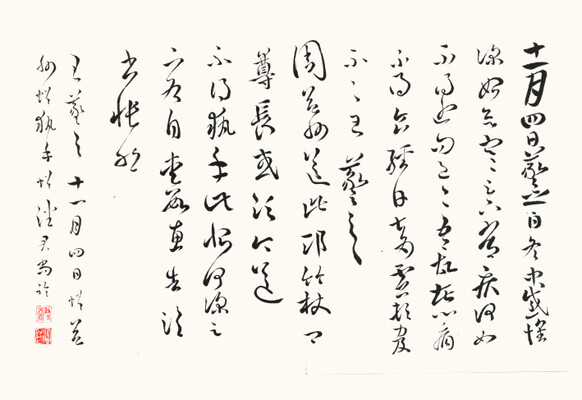
A model of Shi Yi Yue Si Rì Tie (十一月四日帖), Yi Zhou Tie (益州帖), and Zhi Shou Tie (執手帖)
35 X 51 cm
Click to Enlarge. Reserved, not available in shop.
Shi Yi Yue Si Rì Tie (十一月四日帖):
Original Classical Chinese: 十一月四日羲之白。冬中感懷深,始欲寒,足下常疾何如?不得近問,邑邑。吾故苦心痛,不得食經日,甚為虛頓。力及不具,王羲之白。
English: On this 4th day of the 11th month, [Wang] Xizhi reports: It is midwinter and I miss you terribly. How are your usual illnesses now that it has started to get cold? I am dejected because I have not had any news from you lately. I am still suffering from epigastric pain and could not eat for days. I am very exhausted and tired. Despite all my efforts, they are not sufficient to overcome it. Wang Xizhi reports. (Translated by Antje Richter & Charles Chace in The Trouble with Wang Xizhi: Illness and Healing in a Fourth-Century Chinese Correspondence (T’oung Pao 103-1-3 (2017) 33-93), revised by KS Vincent Poon).
Yi Zhou Tie (益州帖):
Original Classical Chinese: 周益州送此邛竹杖,卿尊長或須,今送。
English: NA. The entire phrase may not be translated, for the context in which it was written is unknown or uncertain.
Zhi Shou Tie (執手帖):
Original Classical Chinese: 不得執手,此恨何深。足下各自愛,數惠告,臨書悵然。
English: NA. The entire phrase may not be translated, for the context in which it was written is unknown or uncertain.
A model of Ruan Gong Tie (阮郎帖), Yue Mo Tie (月末帖), Zheng Shi Tie (蒸濕帖), and Xi Wen Tie (西問帖)
35 X 70 cm
Click to Enlarge. Reserved, not available in shop.
Ruan Gong Tie (阮公帖):
Original Classical Chinese: 阮公故爾可憂,時放恕大事,今令速言,何方守篤,大灸不得力而從事以至,甚無計。自必出,惟須小佳鐵石,今出求救,足下可復助,且令得通。阮
English: NA. The entire phrase may not be translated, for the context in which it was written is unknown or uncertain.
Yue Mo Tie (月末帖):
Original Classical Chinese: 家月末當至上虞,妹亦俱去。
English: NA. The entire phrase may not be translated, for the context in which it was written is unknown or uncertain.
Zheng Shi Tie (蒸濕帖):
Original Classical Chinese: 此蒸濕難為人,得示,知足下故爾堪行,想不成病耳。吾至無賴,行剋,王羲之頓首。
English: NA. The entire phrase may not be translated, for the context in which it was written is unknown or uncertain.
Xi Wen Tie (西問帖):
Original Classical Chinese: 不得西問,耿耿。
English: NA. The entire phrase may not be translated, for the context in which it was written is unknown or uncertain.
A model of Qiu Ling Tie (丘令帖), Xie Sheng Zai Shan Tie (謝生在山帖), Bu Shen Tie (不審帖), and Fei Bai Tie (飛白帖)
35 X 70 cm
Click to Enlarge. Reserved, not available in shop.
Qiu Ling Tie (丘令帖):
Original Classical Chinese: 丘令送此宅圖,云可得册畝,爾者為佳。可與水丘共行視佳者,決便當取問其賈。
English: NA. The entire phrase may not be interpreted, for the context in which it was written is unknown or uncertain.
Xie Sheng Zai Shan Tie (謝生在山帖):
Original Classical Chinese: 謝生多在山下,不復見,且得書,疾,惡冷,耿耿。想數知問,雖得還,不能數,可嘆。
English: NA. The entire phrase may not be interpreted, for the context in which it was written is unknown or uncertain.
Bu Shen Tie (不審帖):
Original Classical Chinese: 不審比出日集聚不?一爾緬然,恐東旋未期,諸情罔。
English: NA. The entire phrase may not be interpreted, for the context in which it was written is unknown or uncertain
Fei Bai Tie (飛白帖):
Original Classical Chinese: 飛白不能乃佳,意乃篤好。此書至難,或作,復與卿。
English: NA. The entire phrase may not be interpreted, for the context in which it was written is unknown or uncertain
A model of Zuo Gu Qian Shu Tie (昨故遣書帖) and Cai Ju Tie (採菊帖)
35 X 68 cm
Click to Enlarge. Reserved, not available in shop.
Zuo Gu Qian Shu Tie (昨故遣書帖):
Original Classical Chinese: 羲之白,昨故遣書,當不相遇。知君還,喜慰。足下時行,想今善除,猶耿耿。僕時行以十一日而不保,如比日便成委頓,今日猶當小勝。不知能轉佳不積不?卿至,劣劣。力還不具。王羲之白。
English: NA. The entire phrase may not be interpreted, for the context in which it was written is unknown or uncertain.
Cai Ju Tie (採菊帖):
Original Classical Chinese: 不審復何似永日,多少看未,九日當採菊不?至日欲共行也。但不知當晴不耳。倫等還殊慰意。
English: NA. The entire phrase may not be interpreted, for the context in which it was written is unknown or uncertain.
A model of Zeng Kai Tie (增慨帖), You Wei Tie (由為帖), Yue Ban Tie (月半帖), and Du Zuo Tie (獨坐帖)
35 X 73 cm
Click to Enlarge. Reserved, not available in shop.
Zeng Kai Tie (增慨帖):
Original Classical Chinese: 增慨。知足下疾患小佳,當惠緣想示能果。遲此節散,非直思想而已也。尋復有問,足下以數示。
English: NA. The entire phrase may not be interpreted, for the context in which it was written is unknown or uncertain.
You Wei Tie (由為帖):
Original Classical Chinese: 由為諸,力不具。
English: NA. The entire phrase may not be interpreted, for the context in which it was written is unknown or uncertain.
Yue Ban Tie (月半帖):
Original Classical Chinese: 月半哀感,奈何奈何,念邑邑。罔極之至,不可居處。比日何似,痺差不?悒悒。力知問,王羲之頓首。
English: NA. The entire phrase may not be interpreted, for the context in which it was written is unknown or uncertain.
Du Zuo Tie (獨坐帖):
Original Classical Chinese: 知彼乃爾切切,汝乃獨坐,但有憂色,懸遠不能得遣人,且吾無復久意。果去,當南視汝等也。
English: NA. The entire phrase may not be interpreted, for the context in which it was written is unknown or uncertain.
A model of An Xi Tie (安西帖), Ru Xiong Tie (如兄帖), Feng Huang Tie (奉黃帖), and Zun Fu Ren Tie (尊夫人帖)
35 X 69 cm
Click to Enlarge. Reserved, not available in shop.
An Xi Tie (安西帖):
Original Classical Chinese: 一昨得安西六日書,無他,無所知說,故不復付送。讓都督表亦復常言耳。
English: NA. The entire phrase may not be interpreted, for the context in which it was written is unknown or uncertain.
Ru Xiong Tie (如兄帖):
Original Classical Chinese: 如兄子書道嵩西必果,今復與書督之。足下敕令至,並與遠書也。
English: NA. The entire phrase may not be interpreted, for the context in which it was written is unknown or uncertain.
Feng Huang Tie (奉黃帖):
Original Classical Chinese: 奉黃甘二百,不能佳。想故得至耳。船信不可得,不知前者至不?
English: NA. The entire phrase may not be interpreted, for the context in which it was written is unknown or uncertain.
Zun Fu Ren Tie (尊夫人帖):
Original Classical Chinese: 尊夫人不和,想小耳。今以佳,念累息。卿佳不?吾故劣劣,力知問。王羲之敬問。
English: NA. The entire phrase may not be interpreted, for the context in which it was written is unknown or uncertain.
A model of Ri Wu Tie (日五帖), Yu Kuai Tie (雨快帖), and Qu Qīng Tie (取卿帖)
35 X 79 cm
Click to Enlarge. Reserved, not available in shop.
Ri Wu Tie (日五帖):
Original Classical Chinese: 日五期結極以大,先師之言皆著。推此言之無驗,如此事君當欲知,故及。宜停宅。先生適書亦小小不能佳。大都可耳。
English: NA. The entire phrase may not be interpreted, for the context in which it was written is unknown or uncertain.
Yu Kuai Tie (雨快帖):
Original Classical Chinese: 三月十六日羲之白,一昨省不悉,雨快,君可不?萬石轉差也。炙得力不?不得後問。懸悒不去懷,君云當有旨信,遲望其至。僕劣劣,故遣不具,還具示,王羲之。
English: NA. The entire phrase may not be interpreted, for the context in which it was written is unknown or uncertain.
Qu Qīng Tie (取卿帖):
Original Classical Chinese: 取卿女聟為長史,休種不? 何似,耿耿。
English: NA. The entire phrase may not be interpreted, for the context in which it was written is unknown or uncertain.
A model of Shi Yu Qian Shu Tie (適欲遣書帖) and Ci Jun Tie (此郡帖)
35 X 71 cm
Click to Enlarge. Reserved, not available in shop.
Shi Yu Qian Shu Tie (適欲遣書帖):
Original Classical Chinese: 適欲遣書云得示,知足下得凉以為佳,甚慰。知多疾患,念勞心。吾故不欲食,比來以為事恐不可久,邑邑。思面拜故果之。王羲之。
English: NA. The entire phrase may not be interpreted, for the context in which it was written is unknown or uncertain.
Ci Jun Tie (此郡帖):
Original Classical Chinese: 此郡之弊,不謂頓至於此。諸逋滯非復一條,獨坐不知何以為治。自非常方所濟,吾無故。舍逸而能勞,歎恨無所復及耳。夏人事請託亦所未忽,小都冀得小差,頃日當何理。
English: NA. The entire phrase may not be interpreted, for the context in which it was written is unknown or uncertain.
